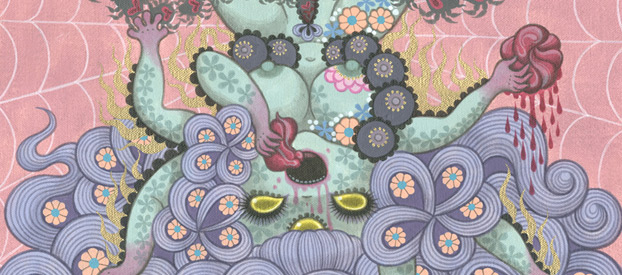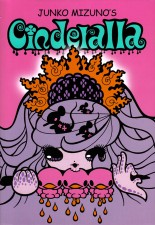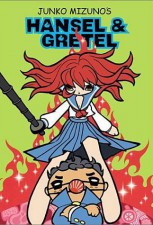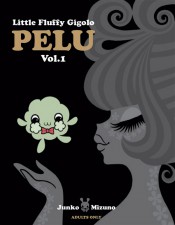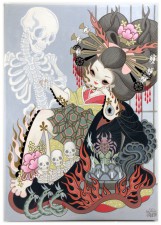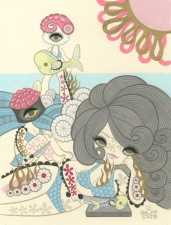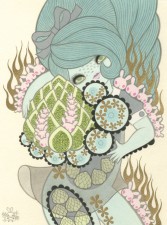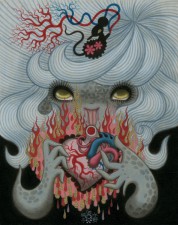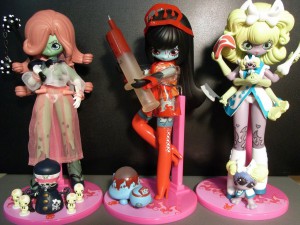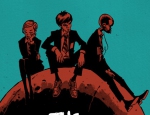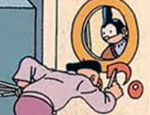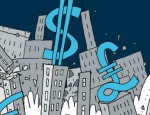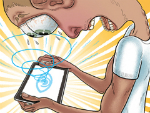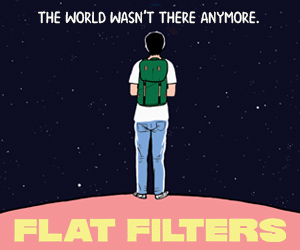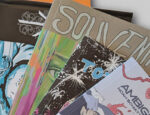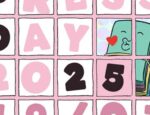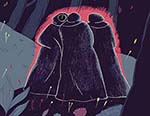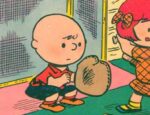A COMICA FESTIVAL TIE-IN!
Spiders crawling over cute baby cheeks, half naked charming geishas eating blood dripping organs, beautiful flowing hair infested with black mice, drizzling with green ejaculate. Welcome to the universe of Japanese superstar Junko Mizuno.
Often touted as the Queen of Creepy Manga, Junko Mizuno is the ultimate exponent of Gothic kawaii, a style that mixes cute with horrific imagery. Mizuno’s unique take on this upped the ante considerably by combining eroticism, psychedelic imagery and toy-like figures with big eyes and flowing hair, with horror.
She first came to prominence in the Japanese comics world with fantasy horror adaptations of Grimm’s fairy tales long before Hollywood discovered this idea to create their own versions for the big screen (which were usually also a horror to bewatch – pun intended.). Published by Koushinsya and Viz, her first adaptation was Cinderalla (1995), based upon … Cinderella. Mizuno had Cinderalla work in a Yakitori restaurant, turn her stepsisters into zombies, and her zombie prince was basically a necrophiliac; and that’s not counting the promiscuity (among zombies) and kid twins obsessed with dismembering people. Mizuno drew it all in her then already signature cute style. Cinderalla became a modest success for her and, at the least, it put her in the spotlight of the English language-speaking parts of the world through its publication by Viz in 2002.
From there on, Mizuno adapted Hansel & Gretel and dived into sci-fi with Pure Trance (1998) and Little Fluffy Gigolo Pelu (2003). Through it all, she continued to concentrate on her art by way of posters, prints, toys, paintings, etc., with comics books appearing sporadically.
Mizuno has created a unique universe where the main focus seems to be the cruelty of beauty, juxtaposing an innocent type of sexuality with horror. This seeming dichotomy resides in every single piece of art she produces. While Cinderalla was drawn with a very thick line with Mizuno clearly finding her voice and adapting her art to comics, Little Fluffy Gigolo Pelu (2003-2005) presented an artist more in control of her craft. Lines were thinner, the figures became less stocky and more fluid in their body language while the ornamental graphics were kept more in line with the storytelling. LFGP was also published in black and white which forced Mizuno to concentrate more on her comics craft, forsaking any embellishing provided by her otherwise frequent use of psychedelic colors. This was not a bad thing since her color work in her illustrations and paintings tends to be much richer in detail, texture and graphic aspects, a sharp contrast between the often flat coloring present in he comics like, for example, Cinderalla.
Meanwhile, Mizuno continued to gather critical acclaim from the arts community and has continued to further explore her style. She is now a celebrated author, residing in California and, during the upcoming Comica Festival in London, the Atomica Gallery in Covent Garden will host her first ever London exhibition. If you want to meet her in person, I suggest attending the first Comica Conversation at the Foyles bookstore on Wednesday 22nd October.
For more information about Belle: The Art of Junko Mizuno exhibition at the Comica website or on the Facebook Event page. Junko Mizuno will also be interviewed by Jason Atomic as part of this year’s Comica Conversations. Booking details for that event can be found here.
Check out the website of the artist right here.






